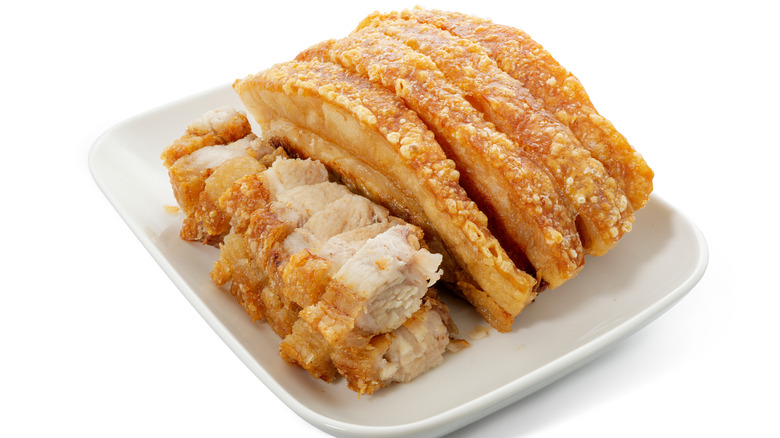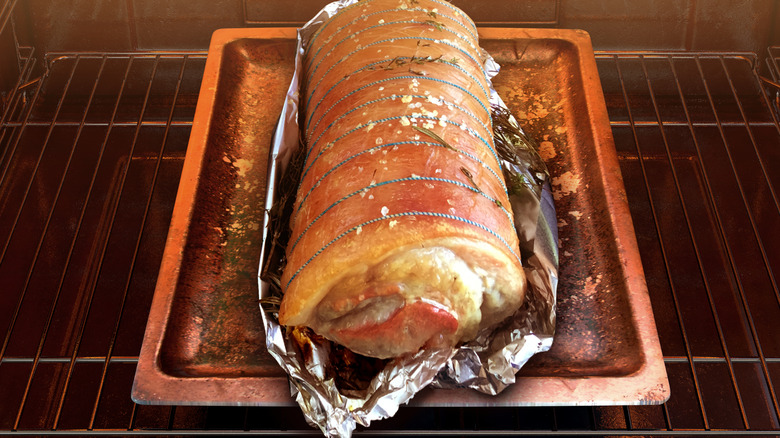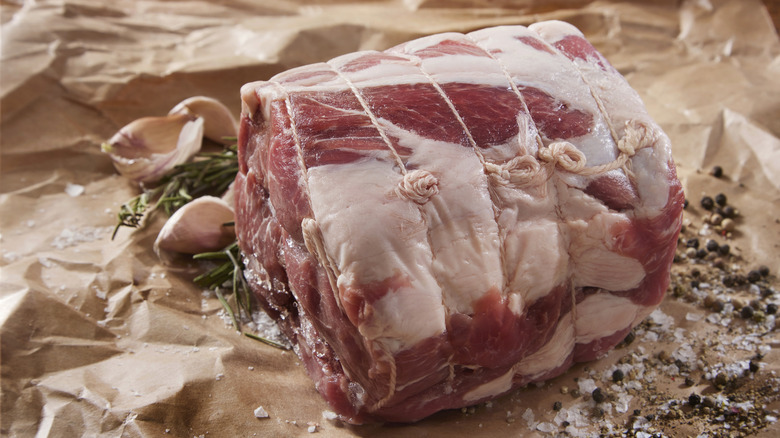Why You Should Pour Boiling Water Over Pork
When it comes to roast pork, achieving the perfect crackling can elevate your dish from good to exceptional. While there are various methods to achieve crispy crackling, pouring boiling water over the pork before roasting is a technique that promises outstanding results. Let's explore why this method works wonders and how it can help you achieve that irresistible crunch you desire.
The key to achieving crackling that is both crispy and tender lies in removing moisture from the pork skin during the cooking process. Pouring boiling water over the pork before roasting jumpstarts this evaporation process. The scalding water helps to open up the skin's pores, allowing excess moisture to escape more easily during cooking. Score the skin in 1 cm intervals with a sharp knife to help distribute the heat and render the fat effectively. As the pork roasts, the slits that the boiling water has helped to open will aid in breaking down and releasing the fat underneath the skin, creating a perfect balance between a crispy exterior and succulent meat.
Not only does pouring boiling water over the pork contribute to achieving excellent crackling, but it also enhances the overall flavor and texture of the dish. This method helps to tighten the skin and render the fat, leading to a rich and melt-in-your-mouth experience.
How boiling water helps with the next step towards crispiness
In order to achieve a crisp skin, you need two things: a tight dry skin and a good layer of fat under it. The process of pouring boiling water over the pork is similar to that used in the Chinese process of roasting ducks, and is called for in any recipe for Peking Duck. The boiling water tightens the skin of the duck, and then the bird is hung to dry completely before the cooking begins. Similarly, after you pour the boiling water over your pork, you'll need to be sure the skin is thoroughly dry before you move on to the next step. You can pat it dry with towels, and then leave it in the fridge for a day or two. During this time, the work that the boiling water began — removing the moisture and oil from the skin — will be completed, and you'll wind up with a perfectly taut skin.
At this point, the cuts you made into the skin and fat before you added the boiling water will be pulled wide open, and this is where the real magic happens. If you rub the meat with oil, salt, and your choice of seasoning, the paper-dry skin will readily absorb the oil. Be sure to get the salt and oil mixture deep into those open cuts. The salt will penetrate beneath the skin to remove any excess moisture and will break down the proteins, which will help to tenderize the meat while adding a savory flavor to the soon-to-be crispy skin.
Other advantages to pouring boiling water over pork
Another advantage of pouring boiling water over pork for perfect crackling is the time and cost efficiency it offers. Unlike other techniques that may require additional steps or specialized equipment, this method is relatively simple and accessible to home cooks. It saves time by combining the process of boiling water with the initial preparation of the pork, allowing you to achieve optimal crackling without adding extra cooking time. Whether you're planning a succulent pork roast or a flavorful pork belly dish, pouring boiling water over the pork is a versatile technique that can be adapted to various cuts and recipes. From traditional Sunday roasts to creative fusion dishes, the method of using boiling water provides consistent and reliable results, ensuring that your crackling is a standout feature of the meal.
Aesthetics also play a significant role in the enjoyment of food, and pouring boiling water over pork can enhance the look of the finished item. The hot water treatment helps to create a clean and smooth surface on the pork skin, resulting in an attractive golden brown and blistered crackling. The visual impact of beautifully crackled pork can make your dish more appealing to your guests.


